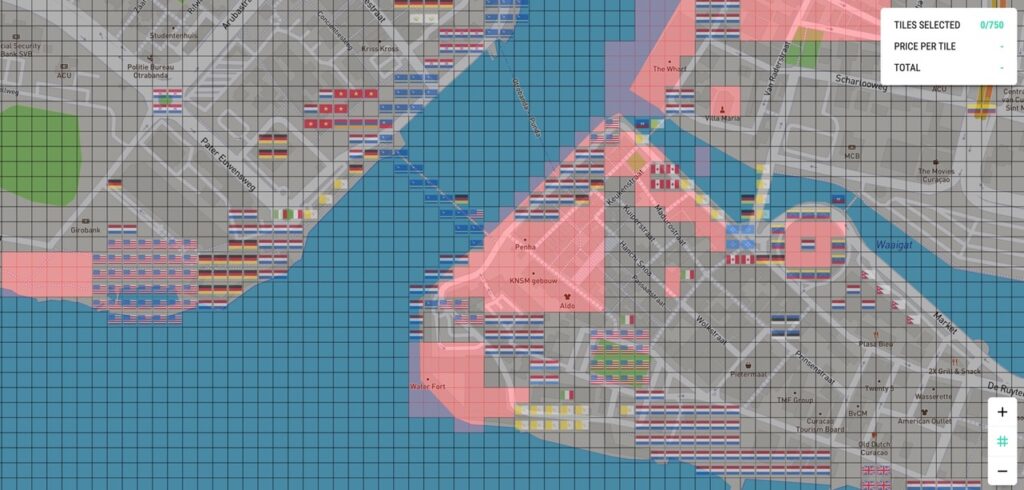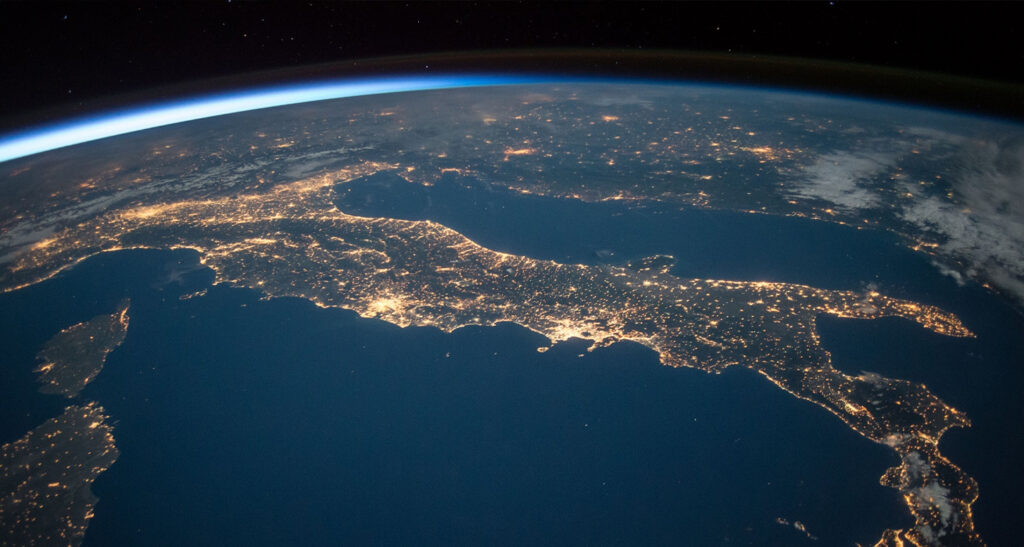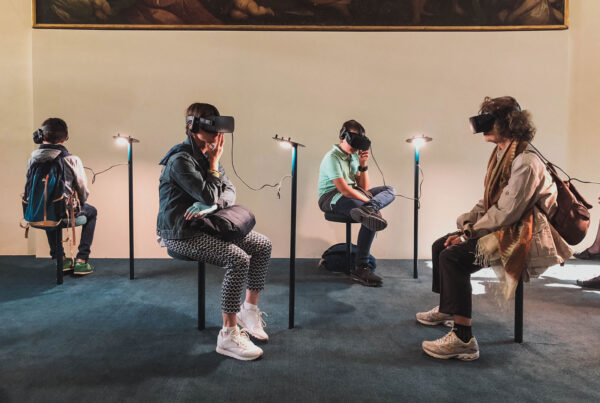As tech giants and startups alike work to develop Earth 2, a virtual reality world where people can live in the future, the real question is: will Earth 2 be better than Earth 1? If you’re like me, then your answer is “yes.” Some people are so taken by this idea that they’re buying and selling virtual land for their second life.
What is Earth 2?
According to the developers, “The vision of Earth 2 is to create a global digital representation of our earth, a place where people can build, abide, trade, live, experience, interact and so much more. The vision is long term and monumental and we feel the introduction of Earth 2 represents the birth of the world’s virtual timeline.”
The idea behind it all is that Earth 2 will use Augmented and Virtual reality to let players roam freely around the virtual planet.
When you log into Earth 2, you can see the world map and on the tiles that are not yet owned by any virtual character. Ownership is displayed in two ways: either they will be colored red or show a flag representing who owns it..

If you hold tiles in a popular area on Earth 2, the price of your property will increase. You can either keep these properties or sell them for a profit.
Earth 2 is a geographically linked digital grid built with MapBox technology. It spans across the entire planet and offers 5.1 trillion land tiles of varying prices.
Some see it as a video game, others cryptocurrency. What is clear to all is its investment potential. For example, the microstate of San Marino sold over 30.000 titles in the last 24 hours with its land tiles closer and closer to being sold out.
A trading platform for Earth 2 is now live, which has already included some features such as the possibility of renting or building virtual structures on their land and earning income taxes. This means that more people will be interested in certain properties including tourist attractions, monuments, or important natural resources.
Is a World-Scale Virtual Environment Possible?
Why is it Difficult to Run Virtual Reality Environments Efficiently?
It is quite difficult to optimise a virtual reality environment and this is because the objects within the scene need to be rendered in real-time. Real-time rendering refers to the speed at which graphics are displayed on a monitor or other display screen. In order to render graphics in real-time, the computer needs to be able to tell what objects need displaying and how they should look at each particular moment (which is called “tracing”).

“Tracing” refers to the process of determining which pixels will be visible from some point in within the virtual environment. This is done by tracing rays from the virtual camera in a straight line until they either intersect with an object or hit the far plane (the boundary of Earth).
The challenge to rendering graphics in real-time comes from “parallax”. Parallax refers to how objects closer move more than those that are farther away when observed in a side-to-side motion.
In order to produce an image at a rate of thirty frames per second, the computer needs to be able to trace 250 pixels for each frame. This means that rendering graphics in real time is not possible because no single card can process this many pixels so quickly (even with multiple cards).
The good news is that game designers and virtual reality developers alike have found a way around this real-time rendering hurdle. The questions of real-time rendering has mostly been answered by something refered to as ‘baking’, if you would like to read more about what baking is and how it can be done – you can read my other article here.
The rest of the answers have been given to us by means of servers. Any and all online multiplayer games have been hosted by means of an online server. A game server is a system which handles the events in online games.. The server transmits enough data about its internal state to allow connected clients to maintain their own accurate version of the game world, which is displayed for player viewing. They also process each player’s input.
One-to-One Scale Earth 2
So – in conclusion – yes, it is possible to host multiple detailed virtual environments on a server. But the doubt comes in as to whether or not the servers will be powerful enough to run a 1:1 scale earth server, which has not been done before.
The only problem that arises, though, is whether or not there are powerful enough servers to run a large-scale virtual environment and if it’s economically feasible.

The biggest open-world game to date is Grand Theft Auto V, which is a single environment game. It’s not that the city it takes place in isn’t large enough to provide an immersive experience – but what would happen if you wanted to explore? If we take GTAV as our example, there are only so many cars and pedestrians on-screen at once before they start to merge into one.
With latency being an issue in way smaller online platforms already, we need to look into how much resources these servers will require.
There are two paths virtual earth can take at the moment, and only time will tell which one it goes down.
- The first is the more expensive route of utilizing ever increasing processing power for better graphics, physics engines and AI routines that’ll be needed in order to make an immersive virtual environment. This will result in virtual land development and hosting being extremely expensive.
- The second being the cheaper route of not compromising visuals to keep the experience from being too expensive. Having a cheaper, less impressive environment might be a good start, but will deter a lot of users that might not be able to foresee the potential.
So, is Earth 2 a Good Investment?
There are two ways of looking this question; is Earth 2 a good investment right now or, on the other hand, will Earth 2 ever be a good investment?
Let’s tackle the first one.
Is Earth 2 a Good Investment Right Now?
With the server technology we currently have, I cant say that I’m confident that people will actually want to start investing in the virtual environment development of the land that they own right now. This is because prices of certain land parcels are ever changing and also because they might not profit from hosting an expensive server either.
As a result, I think people should wait for the virtual environment improvements to be more mainstream. After all, prices are ever changing and as such it’s hard to justify investing in land right now.
Sadly, that means if you want some Earth-sized property of your very own then you’re not going to get it anytime soon. In the meantime, if youre interested, you can explore many other virtua environments that are available to visit now.
Will Earth 2 Ever be a Good Investment?

The short answer is – we will have to see. We will need some brave pioneers to start developing their land parcels and we will also need to hear more from the founders of Earth 2 to hear how exactly they plan on hosting the server and how they imagine it to work (thats if they ever do intend to make it work, or if it was only ever a concept).
The truth is, virtual reality is so new and the tech for rendering virtual worlds has not yet been perfected. This leaves Earth-sized virtual land in a tricky spot, as there might not be enough demand to justify investment in this kind of property right now.
It’s no secret that game design experts are anxiously waiting for VR technology to take off, because the demand for more convincing and immersive experiences virtual worlds will be huge.
And while the developers of Earth-sized virtual land need to take a gamble on whether or not more people will demand access to these kinds of larger parcels, those who want their own space in virtual reality can find plenty of smaller ones for sale that are priced at around $30.
The Architect (2021)
The concept of re-creating cities that already exist is not a new concept, and it’s not uncommon for some of those who have the money and resources to create a virtual space that comes with all kinds of features, from street vendors to buildings.
A game has been released in 2021 called The Architect, where players players are able to design and build virtual worlds, but for now the process of building a virtual city is done one political district at a time.
This game was designed in order to teach players about some of the hurdles faced by people who live in cities that have been urbanized without proper planning – as well as how these divisions can be overcome through good design techniques.
Most citybuilders cast you as a god-like city planner, laying down road networks and zoning districts upon an unblemished paradise. I think this is essentially the bravado that comes with owning virtual land, too. An empty piece of land with a lot of potential – yet to be explored and loved by others.
This game is all about the process of building a virtual city. You are able to design and build your own virtual world, but for now people can only do so one political district at a time – and this is because of the sheer size and detail of the city.







